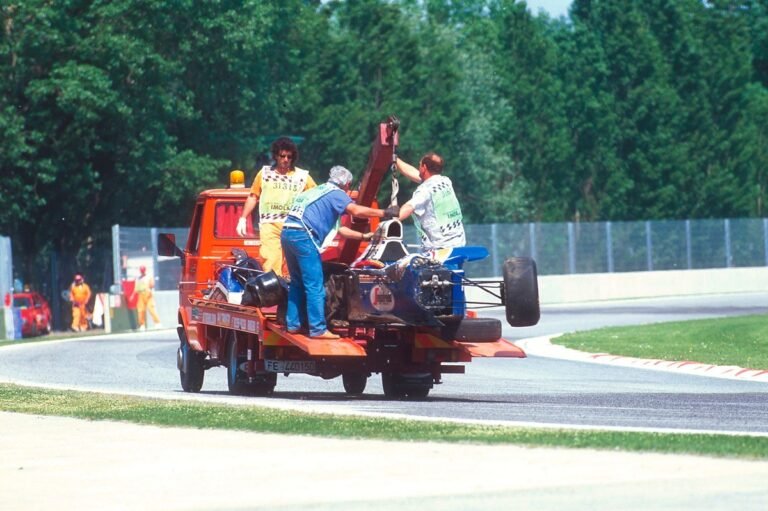Imola Tragedy: Investigation into Ayrton Senna’s Fatal Crash
The 1994 San Marino Grand Prix marked a pivotal moment in Formula 1 history, catalyzing significant safety reforms following the tragic deaths of Ayrton Senna and Roland Ratzenberger. Investigations into Senna’s crash focused on the failure of the steering column on his Williams FW16, leading to a criminal trial that scrutinized key figures including Frank Williams and Adrian Newey.
Steering Column Analysis
Prosecutor Maurizio Passerini sought to establish that a shear in the steering column led to Senna’s fatal crash at Tamburello corner. Expert analysis commissioned included examinations by Professor Enrico Lorenzini and his team at the University of Bologna, which involved two specialist groups employing Scanning Electron Microscopes (SEM).
Gian Paolo Cammarota, who contributed to the analysis, remarked, "The SEM provided clear, indisputable answers in the Senna case." Findings revealed significant design flaws in the steering column, particularly following modifications where diameter reductions led to compromised structural integrity—described as a "major design mistake" by Cammarota.
Technical Findings
The original steering column design featured a single-piece metal tube modified to lower the driver’s position at Senna’s request. This modification resulted in a three-part column made of differing materials—T45 and EN14 steel—leading to inconsistencies in material properties.
Cammarota noted, "The chemical and mechanical property analyses showed the use of two different materials." These alterations, coupled with a lack of proper finishing on the internal surfaces, allowed a crack to develop prior to the race. According to Angelo Casagrande, another expert involved, Senna’s steering column was already compromised before the race began, with signs of fatigue evident upon inspection.
Legal Proceedings
The trial implicated several high-profile figures in manslaughter and culpable homicide charges, though charges against Williams and others were eventually dropped, with the focus shifting to Newey and technical chief Patrick Head. The prosecution faced challenges as it was unable to definitively prove that the steering column failure caused Senna’s off-track incident. Video footage showed the vehicle behaving erratically just before the crash, complicating the prosecution’s case.
Ultimately, the court acquitted Head and Newey, leading to a significant shift in F1 regulations. The incident spurred the implementation of stricter safety protocols for critical components, mandating oversight by experienced engineers.
Conclusions and Impact
In his autobiography, Newey reflected, "Regardless of whether that steering column caused the accident or not, it was a bad piece of design that should never have been allowed to get on the car."
The Imola tragedies not only influenced car design safety standards but also highlighted the necessity for rigorous material and structural analysis within the motorsport engineering community, ultimately shaping a more safety-conscious environment in Formula 1.



